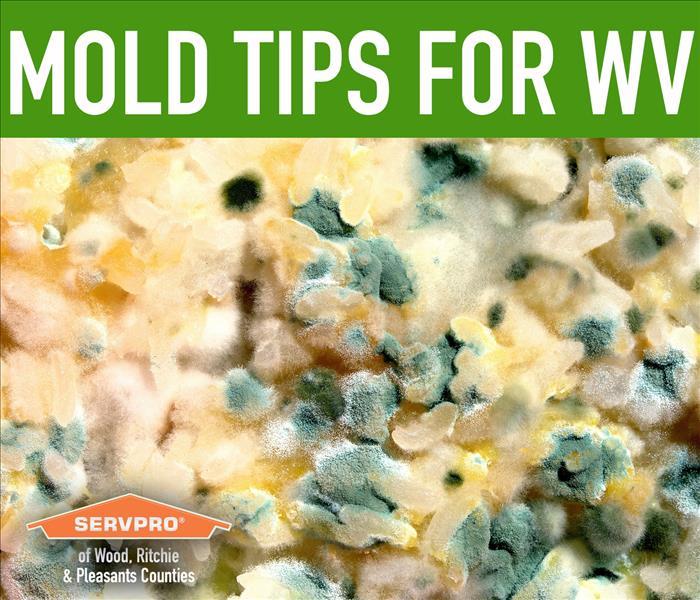5 Way Mold Grows in West Virginian Homes (and how to Prevent It)
7/20/2020 (Permalink)
West Virginian summers are mostly humid with an average temperature of 46 °F, and this can be prime for mold to grow.
Mold belongs to the fungus family. It is not the mold you see that is the issue, instead it is the mold spores that are in the air. When inhaled, the spores may cause health effects such as irritations and allergies.
What Causes Mold to Grow In My Home?
Mold colonies need certain environments to grow best. If you can avoid or minimize these you will be able to potentially avoid mold growths in your home. The 5 things that benefit mold growths are:
- Humidity This is the first and foremost factor contributing to the growth of mold. Mold being a living organism that feeds on moisture. A little exposure to a leaking pipe, heat moving through the home or even a clothes dryer in an enclosed space can create moisture in the air and this can quickly give birth to mold colonies in this area of your home.
- Darkness Mold thrives in the dark and quiet places where ultraviolet rays cannot prevent it from growing. Mold flourishes in the dark nooks and corners of the house where sunlight is unable to reach.
- Warmth The outdoor temperature of West Virginia ranges from 25°F-82°F, whereas a mold requires 60°F to grow with full swing. So, it should come as no surprise that the warmth inside of the your home can become a breeding ground for mold due to humidity and moisture created by the differing temperatures from inside to outside.
- Oxygen Like all other living beings, mold feeds on oxygen. The combination of warmth, moisture and oxygen in areas such as your home basement or bathrooms create a feeding ground for mold.
- Food Mold needs food to thrive. The question is, what does mold eat? Well, it can be your drywall, meat, and wood to name a few. Black toxic mold is fond of cellulose, which is commonly found in wood and paper (your walls).
How Do You Prevent Mold From Growing?
Now that we know the common reasons behind mold growth, we can equip ourselves with mold remediation methods to minimize (or even remove) the ability for mold to grow.
Here is how to prevent mold from taking over your house in a few convenient steps;
- To Avoid Humidity: a constant air flow decreases humidity. An exhaust fan is the simplest way to do this. Install an exhaust fan in your bathroom(s), kitchen and basement and use them whenever heat is present (for example, a hot shower or bath, cooking or hot water system is on in the basement).
- Other methods to improve air flow are:
- Keep Basement tidy. A build up of items can minimize or restrict airflow. If water or moisture becomes present in any area of the basement you are likely to be feeding the mold now with stagnant air.
- Clean and dry every moist surface areas across your house.
- Frequently check pipes for blockages. This is a similar rule to the exhaust fans.
- Make use of mold killing products for cleaning the bathrooms, tubs, and sinks.
- Immediately dispose of materials infected with mold.
- In the extreme case of mold accumulation or possibly even black toxic mold, please seek professional advice because the high amount of mold may cause health problems. Your safety and heath is priority.
If you want any more questions answered or even would like us to have a look at your mold issues and see if we can help further, please call us right now on 304-428-7378 or contact us through our form by clicking here.
We hope this has helped.
From the team at SERVPRO of Wood, Ritchie & Pleasants Counties.
RELATED BLOG POSTS:




 24/7 Emergency Service
24/7 Emergency Service
